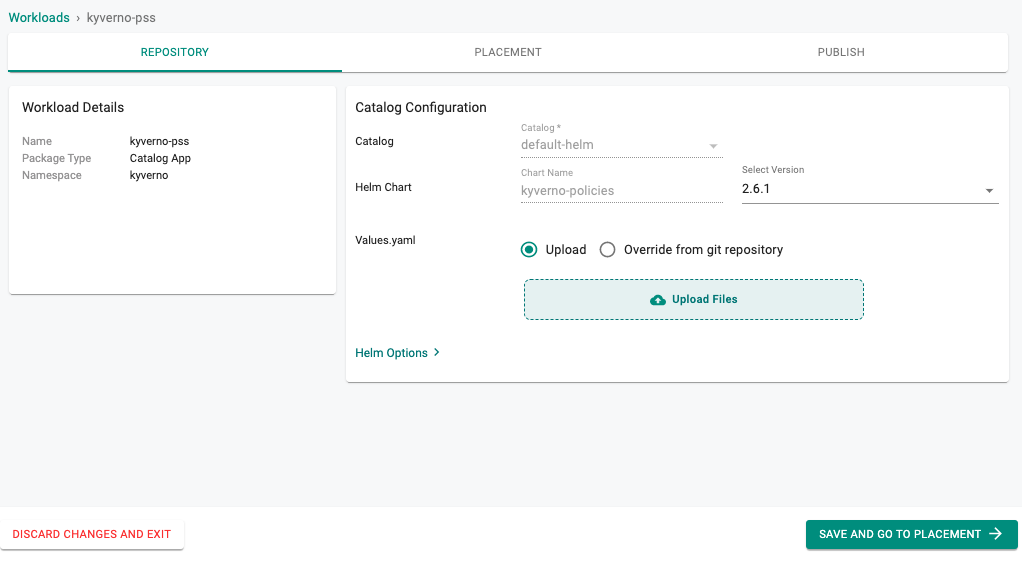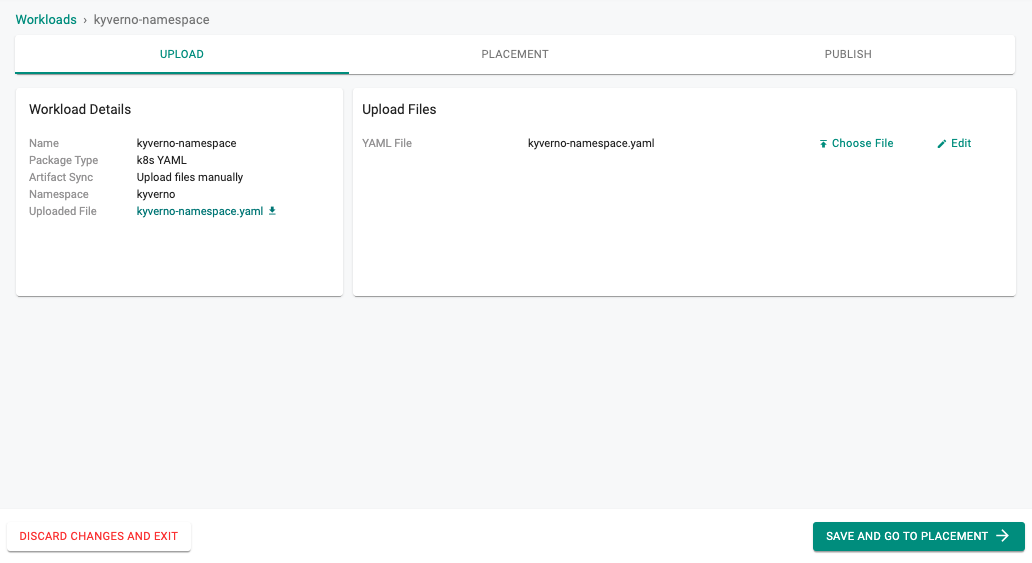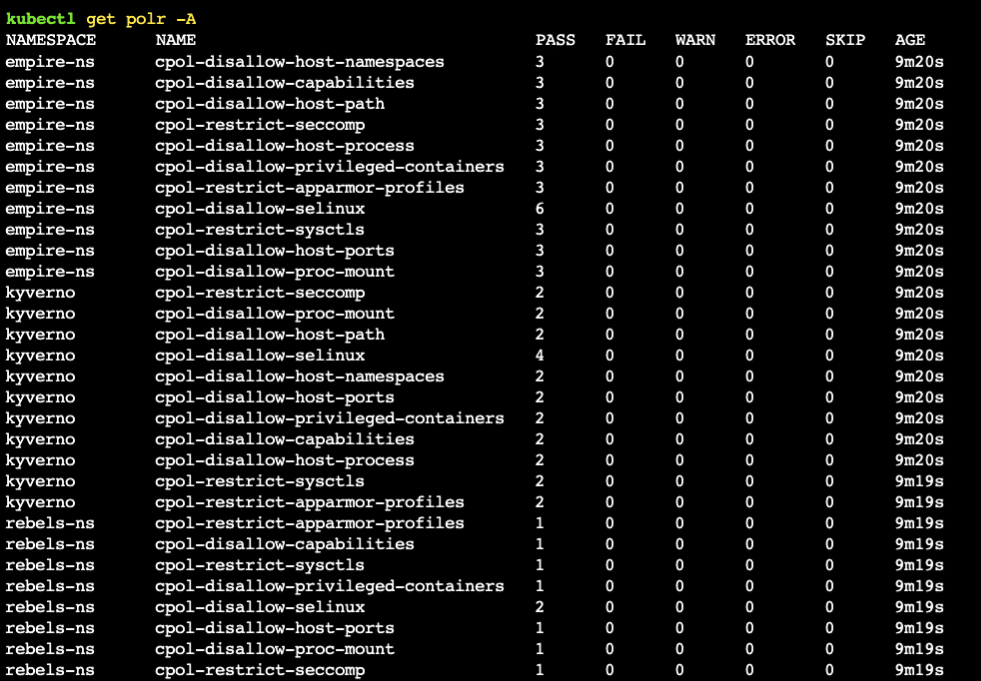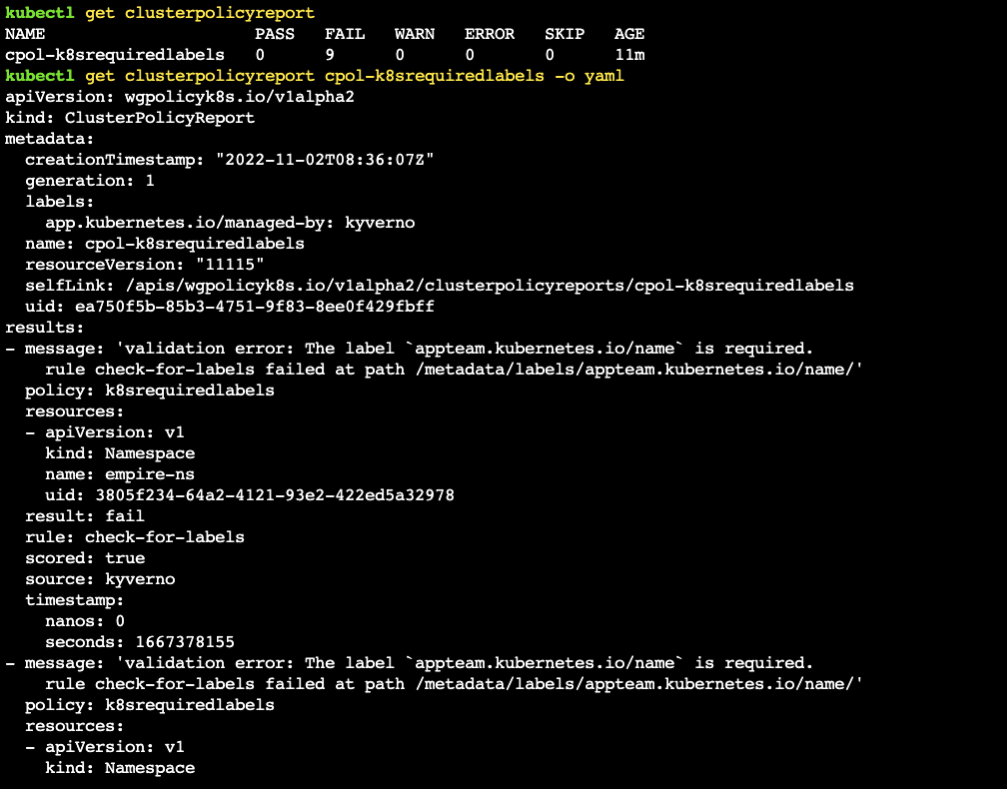What Will You Do¶
In this exercise, you will be defining policies and viewing violations against configured policies.
Assumptions¶
- You have already provisioned or imported a Kubernetes cluster using the controller
- You have successfully published the kyverno add-on based cluster blueprint to your cluster
Policy for Pod Security Standards (PSS)¶
Important
For more information on Pod Security Standards (PSS), please refer here
Kyverno's implementation of Pod Security Standards (PSS) is available as a helm chart and we will leverage this chart for this exercise.
- Login into the Web Console and navigate to your Project
- Under Applications, select Workloads
- Create a new workload and select the Create New Workload from Catalog option
- Search for kyverno policies in the Catalog
- Select Create Workload
- Provide a name for the workload
- Select the "kyverno" namespace, click continue
- Click Save and Go to Placement
- Select the cluster and click Save and Go to Publish
- Click Publish
Policy to check for labels against a namespace¶
This example policy is to ensure that namespaces are being created with appropriate labels in a cluster.
- Login into the Web Console and navigate to your Project
- Under Applications, select Workloads
- Create a new workload
- Provide a name for the workload, select the package type as K8s YAML
- Select the Upload files manually option for Artifact Sync
- Select the "kyverno" namespace and click continue
- Upload the YAML file
- Click Save and Go to Placement
- Select the cluster and click Save and Go to Publish
- Click Publish
apiVersion: kyverno.io/v1
kind: ClusterPolicy
metadata:
name: k8srequiredlabels
spec:
validationFailureAction: audit
background: true
rules:
- name: check-for-labels
match:
resources:
kinds:
- Namespace
validate:
message: "The label `appteam.kubernetes.io/name` is required."
pattern:
metadata:
labels:
appteam.kubernetes.io/name: "?*"
The above examples set the validation failure action to audit. Insecure or non-compliant configurations can be blocked by setting the validationFailureAction to enforce.
Background scanning, enabled by default in a Policy or ClusterPolicy object with the spec.background field, allows Kyverno to scan existing resources and find if they match any validate rules. If existing resources are found which would violate an existing policy, the background scan notes them in a ClusterPolicyReport or a PolicyReport object, depending on if the resource is namespaced or not. It does not block any existing resources that match a validate rule, even in enforce mode. Background scanning is an optional field and defaults to true, only taking effect on validate rules.
More examples for Kyverno polices are available here
Checking for violations against configured policies¶
Policy reports, like Kyverno policies, have both Namespaced and cluster-scoped variants; a PolicyReport is a Namespaced resource while a ClusterPolicyReport is a cluster-scoped resource. A ClusterPolicy (a cluster-scoped policy) contains a rule which matches on Pods (a Namespaced resource). Results generated from this policy and rule are written to a PolicyReport in the Namespace where the Pod exists.
You can view a summary of the Namespaced policy reports using the following command:
kubectl get policyreport -A
Policy reports can be inspected using kubectl describe or kubectl get.
kubectl describe polr <name> -n <namespace>
kubectl get polr <name> -n <namespace> -o yaml
Similarly, you can view the cluster-wide report using:
kubectl get clusterpolicyreport
Recap¶
Congratulations! You have deployed Kyverno policies and viewed violations against resources in the cluster successfully.



